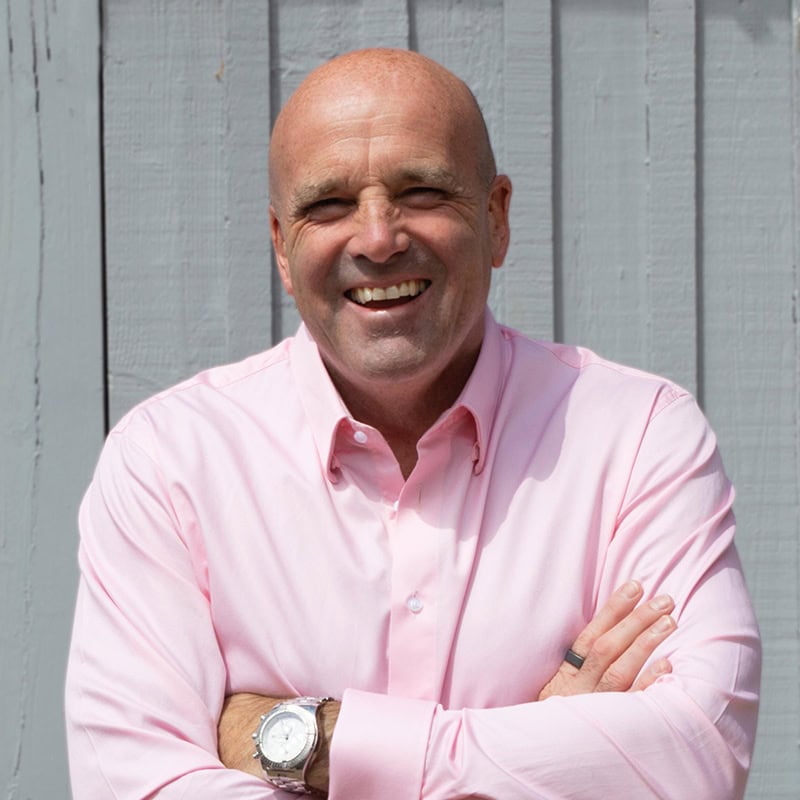Quick Summary
Vision Design turns chaos into clarity. Aligning teams, driving growth, and freeing founders from the daily grind. It’s where scale begins.
Takeaways
-
Vision Design is the foundation for scaling beyond 30–100 employees without descending into chaos and misalignment.
-
A strong vision isn’t a statement, it’s a system that guides decisions, hiring, strategy, and culture.
-
Clarity around purpose, BHAG, and values unlocks focus, autonomy, and momentum across the entire business.
-
Without a designed vision, founders become bottlenecks; with it, they become catalysts for growth.
It’s been a busy time at Monkhouse & Company over the last few weeks. As well as welcoming new clients on board and helping our existing ones continue to build, grow and develop, I’ve been working on a new model that captures everything I’ve learned from years working as a CEO and coach. It’s called the Founder Freedom Framework, and I’ll be launching it formally soon. It contains nine different accelerators that can turbo-charge a business’ growth. The first one we’re going to look at is Vision Design.
Identifying the challenge
When founders get in touch with me, it’s usually because they’ve hit a wall. Not just any wall—the particular kind you slam into somewhere between 30 and 100 employees. That’s where the rule of three and ten kicks in. You’ve probably heard of it: things break every time your headcount roughly triples or increases by a factor of ten. At 30 people, it’s all hands-on, founder-led, instinctive. At 100, everything changes. And unless you’ve taken time to deliberately design your business for scale, those changes can hurt.
Most of the time, the pain presents as drift: execution gets patchy, teams lose focus, and the business starts to feel fragile. You’re still growing, but it’s chaotic. Suddenly you’re the bottleneck again. And you’re working harder than ever—just to stay afloat.
What’s missing? In most cases, it’s not talent. It’s not even process. It’s clarity.
That’s why Vision Design is the very first accelerator in our Founder Freedom Framework.
Why Vision Design?
I called it that deliberately. Jim Collins—who’s had a big influence on how I think about this—says vision is everything. And in my view, a CEO has two jobs: create the vision and sell the vision. That’s it. Everything else is a bonus.
People get tangled in semantics here: vision, mission, purpose, values. But if you look at what Collins lays out, vision comprises three things: your purpose (why you exist), your BHAG (your Big Hairy Audacious Goal—essentially your mission), and your core values (how you behave).
We use the One Page Strategic Plan to help clients put these elements into words. That’s where Vision Design begins. It’s the first two columns—purpose, BHAG, and values—and it sets the tone for everything that follows. If you skip this step, or half-arse it, the rest of the strategy work won’t stick.
This week, I spent some time in Canada with a leadership team doing exactly this. We mapped out their purpose—harder than it sounds. Most people, when you ask why they do what they do, give you a what. Then you ask again and they give you another what. You have to dig. We got there in the end.
Then we built their BHAG—their destination in three to five years. Most of our clients want to double. So we get specific. Doubling in five years means 17% compound annual growth. Three years? That’s 23%. That number becomes part of the vision.
We define big strategic thrusts—the things that must be true if we’re going to hit that goal. Some people call them strategic pillars. It’s the same thing. It’s how we differentiate, where we’ll invest, and how we’ll win.
And then, crucially, we look at values. Behaviours. What do we praise, hire, fire and promote on? How do we codify the culture we need to get us to the BHAG?
We revisit these components again and again across coaching sessions. It’s not a one-and-done workshop. It’s the framework that holds everything else together.
Lots of clients I’ve worked with over the years have believed they have clarity. But usually, when I dig a little deeper, their leaders all have different ideas about who the business was for. Their sales and product teams are chasing different outcomes. Once we re-ground their vision, including a proper Ideal Customer Profile and well-defined sandbox, we see churn drop and NPS rise in parallel. Not magic. Just alignment.
Put all of that together and you’ve got a designed vision. Not a statement. A system.
The CEO’s job: Create it, then sell it
If you’re a founder or CEO, this is your job. Vision isn’t a deck. It’s not something you write once and file away. It’s your job to make it real—for your team, your customers, your investors.
When you do this well, it becomes magnetic. It attracts the right people. It aligns your team. It gives you a filter for decisions. Who do we hire? Who do we promote? Which customers are a fit? What markets do we say no to?
It even helps with investment. I’ve seen founders walk into investor conversations with a designed vision—and suddenly the room sits forward. Because clarity is rare. Most pitches are noise. But when a founder can articulate a bold destination, why it matters, how they’ll get there, and what values will guide the journey—it hits differently.
Of course, when you’re small—six or ten people—you can get away without this. The founder just says the same things over and over again. It’s tribal. But once you cross that 30–50-person mark, you need infrastructure. You need a vision that lives without you having to explain it every time.
And that’s what Vision Design gives you.
The tools that make it work
We’ve built a full toolkit to support this work. We’ve got a framework for finding purpose—a series of exercises that draw on Collins’ Hedgehog Concept: what are you passionate about, what can you be the best in the world at, and what drives your economic engine? Your BHAG should sit at the intersection of those three.
And once all of that is in place, operationalise it. Build a communication rhythm. Embed the vision into hiring and performance reviews. Create decision filters so teams can act with autonomy and confidence.
The goal isn’t to create a statement. It’s to build a shared mental model of the future—so clear that everyone can make decisions without second-guessing.
Where Vision Design shows up (or doesn’t)
When I walk into a business where Vision Design hasn’t been done—or hasn’t been done well—the symptoms are always the same. Drift. Friction. Fatigue.
You see silos forming. Leaders confused about what really matters. Teams investing time in low-priority projects. Conflicting initiatives running side by side. Nobody’s quite sure where the business is going, or how what they’re doing connects to it.
It’s not that people don’t care. It’s that they’re unclear.
And the founder? Often back in the weeds. Constantly re-explaining, realigning, reasserting. That’s not leadership. That’s firefighting in disguise.
On the flip side, when we get this right, the difference is night and day. Businesses that don’t have a clear vision will spend endless hours in pointless meetings, applying intense scrutiny to aspects of the business that won’t change a bloody thing and don’t really matter in the slightest. Once you’ve been through a Vision Design session, the difference will be massive. Everyone at the organisation, from ops to sales to tech, will be able to describe the purpose, the BHAG, the strategic thrusts. Not in buzzwords. In their own words. That’s when you know it’s working.
Vision Design is how you stop being the bottleneck and start being the catalyst.
Vision Design in our coaching
In our coaching programme at Monkhouse & Company, this is where we start. Always. Before we touch OKRs, dashboards or cadence, we nail the vision.
If you’re coming to us for executive coaching—because you want to level up as a leader—or for business coaching—because you want to build a scalable organisation—Vision Design is your foundation.
We run it as a facilitated session with your senior team. Sometimes it takes a few hours, sometimes a couple of days. What matters is that we get alignment. Once the words are right, we build habits around them. Because a vision is only useful if it’s alive in the business.
It can fundamentally change the way you work on a day-to-day basis. For example, it will probably change your weekly meetings. Instead of everyone reporting blank on activity, you’ll find they are switching to talk about impact. What’s moving your business closer to your BHAG? What’s holding you back? That’s how you embed the vision in the day-to-day.
You’ll almost certainly find it makes hiring interviews ten times easier. Instead of vague questions, you can point to your values and ask, “When have you behaved like this?” Real stories. Real fit.
We even use the vision as part of internal leadership development. In coaching sessions, I ask senior leaders: “How does what you’re doing move us closer to the vision?” It forces ownership. It challenges passivity. It makes strategy personal.
Why now?
If you’re somewhere between 30 and 100 employees, and things feel harder than they should—this is probably what’s missing.
Not another system. Not another hire. Not another offsite.
Clarity.
Clarity about why you exist. Where you’re going. What it’s going to take to get there. And how you behave along the way.
That’s what Vision Design gives you. And once you have that, everything else starts to click into place.
Don’t wait
If you take one thing from this blog, let it be this:
Don’t wait until things break. Don’t wait until you’re firefighting daily. Don’t wait until your best people leave.
Design the vision now. Sell it every day. And build the business you set out to create.
If you want help doing that, get in touch. We’ve done this with hundreds of founders. We can do it with you.
Because it all starts with Vision Design. Let’s get to work.
Written by business coach and leadership coaching expert Dominic Monkhouse. You can order your free copy of his book, Mind Your F**king Business here.

